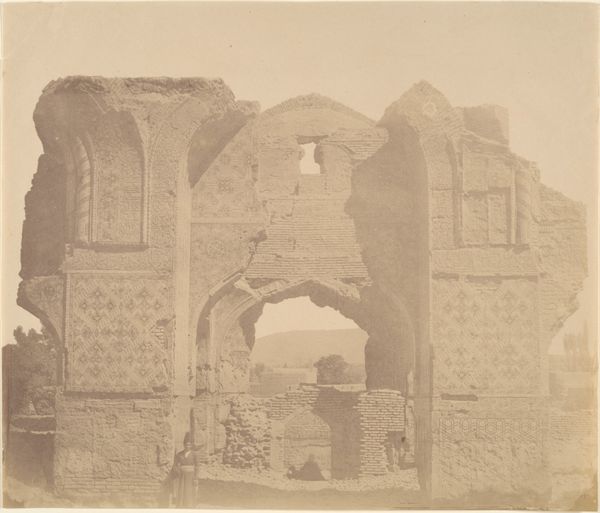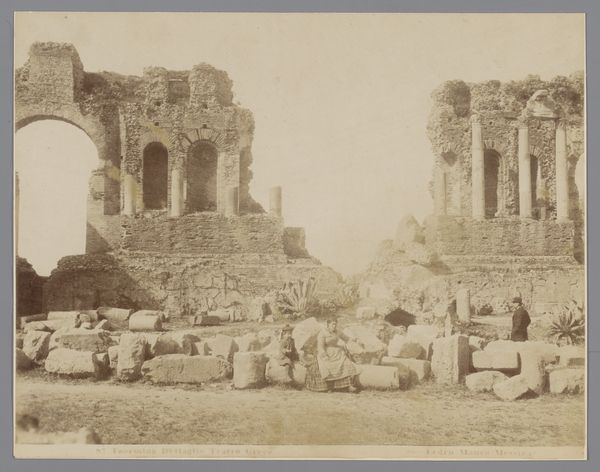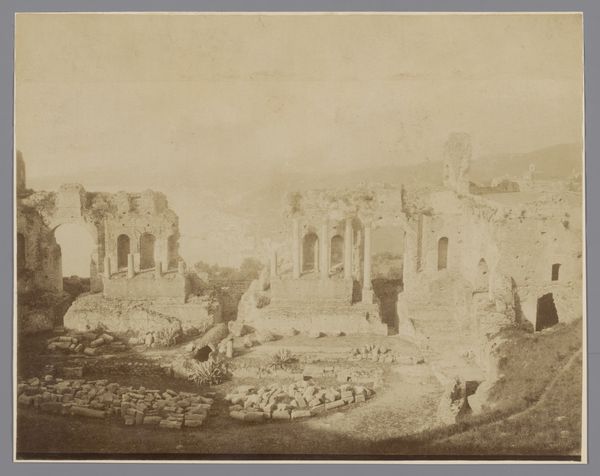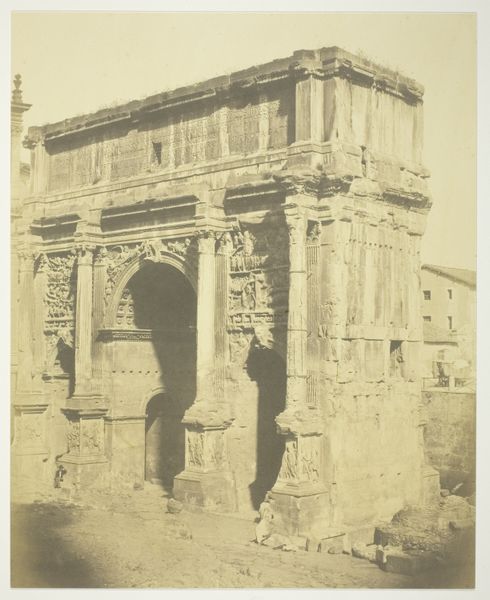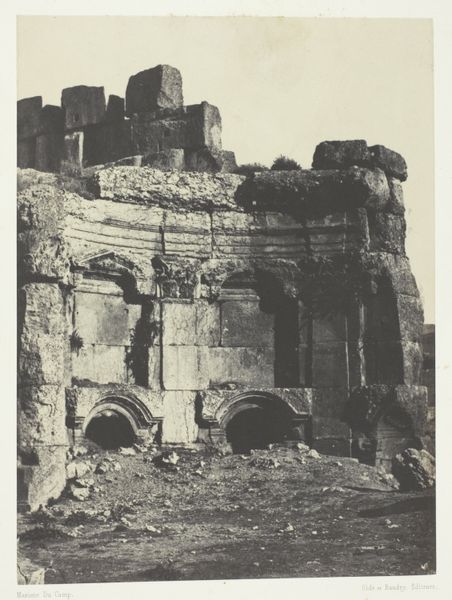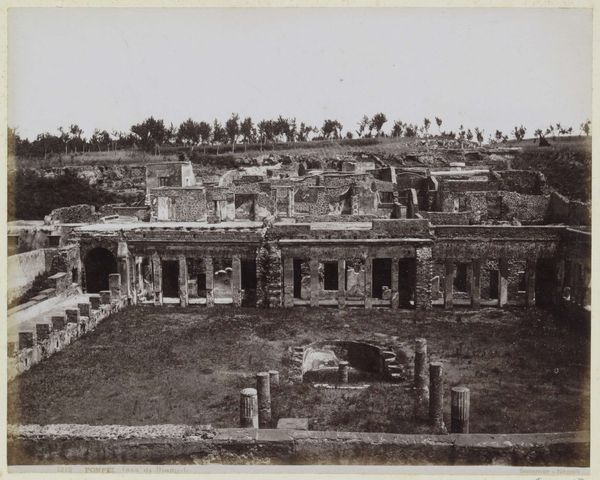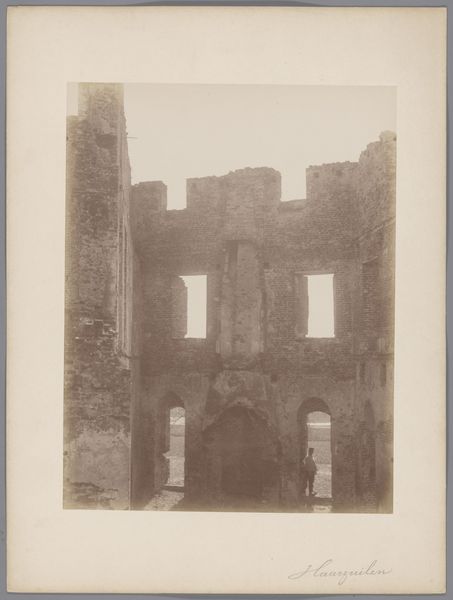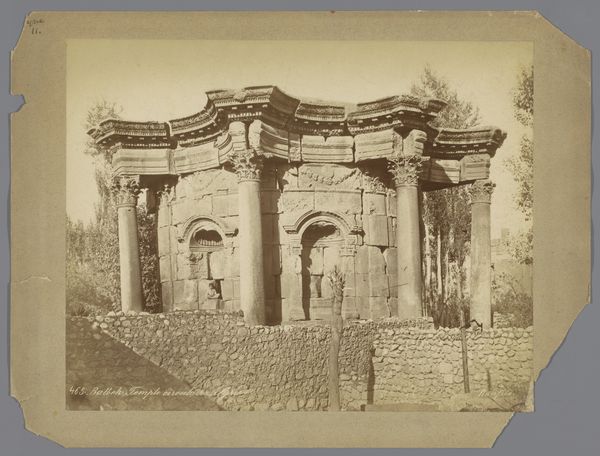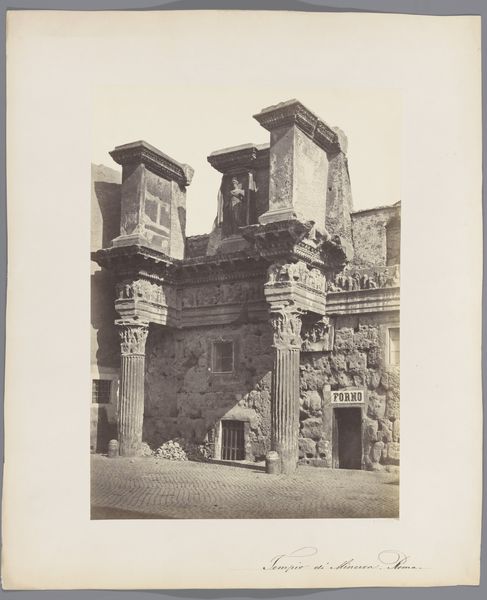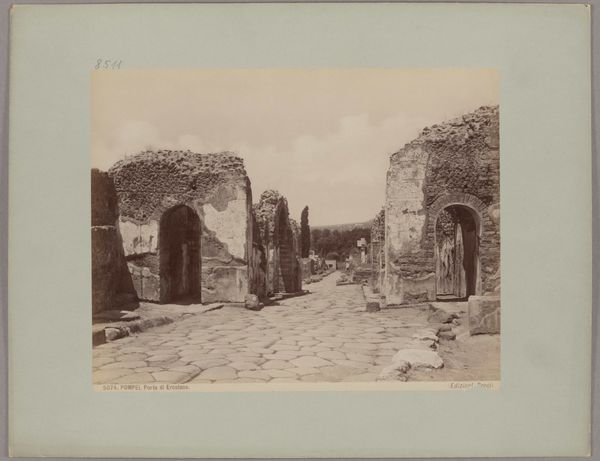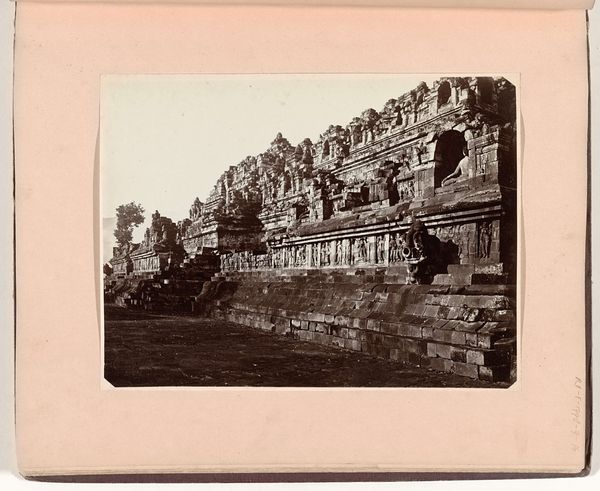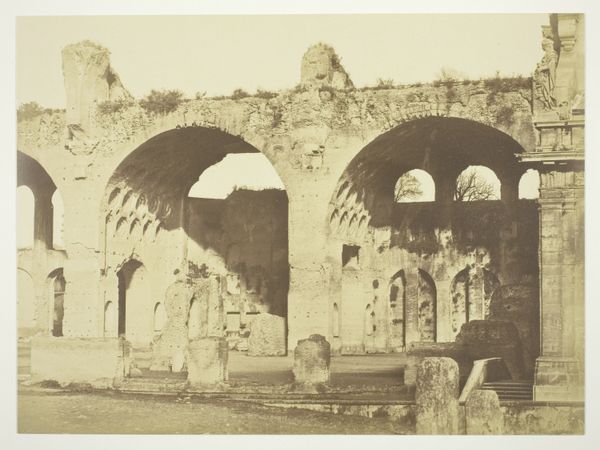
photography, albumen-print
#
landscape
#
photography
#
ancient-mediterranean
#
cityscape
#
albumen-print
Dimensions: height 195 mm, width 260 mm
Copyright: Rijks Museum: Open Domain
Curator: Looking at this image by Anderson, titled "Villa Adriana in Tivoli, Italië," dating roughly from 1860 to 1885, made through albumen print photography, what captures your eye first? Editor: The stark contrast of ruins juxtaposed with the seemingly casual presence of people within the scene immediately draws me in. It evokes a sense of melancholy, a poignant reminder of time's passage and the mutability of power structures. Curator: Precisely. What intrigues me about this particular photographic representation is how it participates in the broader nineteenth-century obsession with documenting and classifying the past. Tivoli, with Hadrian’s Villa, became a key site for representing classical antiquity. These images often served to reinforce the cultural and political dominance of European powers, positioning them as the inheritors of this classical legacy. Editor: I completely agree. The framing and composition seem intentionally designed to evoke that sense of appropriation. But it also begs the question of access and privilege. Who was able to travel to these sites, witness these ruins firsthand, and in turn, reinforce or challenge the colonial gaze? How do class, race, and gender dynamics shape our interpretation and experience of these historical landscapes? Curator: It is a question of circulation, wouldn’t you say? Images like these circulated widely as postcards or in albums, contributing to the formation of popular ideas about history and empire. Consider the implications of viewing the grandeur of Roman architecture, yet simultaneously perceiving the decay that time and perhaps societal neglect have brought about. There’s an interesting dialogue about enduring power, its vulnerabilities, and its relationship to modernity. Editor: Indeed. And in our current moment, considering ongoing debates around monument preservation and repatriation, revisiting photographs like this becomes all the more relevant. It prompts a deeper interrogation of how historical narratives are constructed and whose stories are being centered, both in the past and the present. Looking back through this albumen print is really looking forward, isn't it? Curator: It is. I am particularly struck by how it underscores the persistent ways in which historical landscapes serve as ideological stages. This piece offers such compelling access for considering how the past can become both a mirror reflecting our present anxieties and aspirations, and also a lens refocusing our understanding. Editor: This really challenges us to look beyond just what is in front of us and unpack the historical baggage within these captured ruins. Thank you for that perspective.
Comments
No comments
Be the first to comment and join the conversation on the ultimate creative platform.
